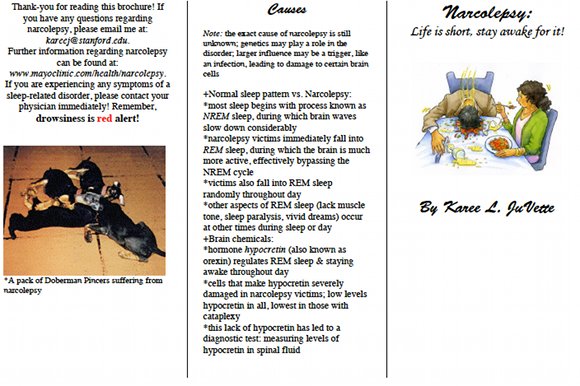

It can occur spontaneously, but many people notice that it is triggered by sudden emotions, such as laughter, excitement fear or, anger. Cataplexy can last for several seconds or minutes. No matter how severe the loss of muscle function is, the person remains fully conscious throughout the episode. For this reason narcolepsy can be dangerous.Ĭataplexy – a sudden loss of muscle function while conscious – can range from a brief sensation of weakness in certain areas of the body to a total collapse where all the muscles are affected, causing a person to fall down.

working, playing a game, walking, talking to someone, eating, driving or operating machinery. People can fall asleep doing absolutely anything, e.g. Narcolepsy may also affect a person’s ability to perform normal daily activities. Overweight: people with narcolepsy are more likely to be overweight or obese.The person’s performance of the task will usually be impaired and they may not remember doing those things when they wake up. Automatic behaviour: continuing with a task (usually a task that a person does often) even though they are asleep.Disrupted night time sleep (especially trouble staying asleep) and other sleep disorders such as sleep apnoea.Hallucinations: hearing, seeing or feeling things that aren’t there often happens when falling asleep or waking up.Sleep paralysis: a person temporarily can’t move any part of the body upon waking or when falling asleep.
 Cataplexy: sudden loss of muscle function while conscious. Difficulty staying awake for long periods of time.
Cataplexy: sudden loss of muscle function while conscious. Difficulty staying awake for long periods of time.  Abrupt napping (‘sleep attacks’) during the day no matter how much a person sleeps at night. Excessive daytime drowsiness and sleepiness. What are the symptoms of narcolepsy and cataplexy? In rare cases narcoplexy is caused by a genetic defect, a traumatic injury to the brain or a brain tumour. The reason for this is unknown, but it is thought to be an auto-immune reaction, where the body’s immune system mistakenly starts to attack its own cells. When a person also has cataplexy, there appears to be a loss of the brain cells that produce hypocretin. In some cases, narcolepsy runs in families. Hypocretin promotes wakefulness, so when there’s not enough, a person can fall asleep. The exact cause of narcolepsy is unknown, but it is thought to develop when the levels of a brain chemical called hypocretin are too low. Many people with narcolepsy also suffer from other symptoms such as cataplexy (a sudden loss of muscle function while conscious) or sleep paralysis (the inability to move any part of the body upon waking). This can happen several times every day, and it not related to how much (or how little) sleep a person gets each night. Naps may last for a few minutes or up to an hour or more, and the person may feel alert for several hours after a nap. They will often feel excessively tired and sleepy and have an overwhelming urge to nap at any time of the day. But even when we feel this way we usually manage to overcome those feelings and carry out our usual activities, although perhaps a bit less efficiently than usual. Most of us sometimes feel tired and sleepy during the day. Narcolepsy means excessive daytime sleepiness.
Abrupt napping (‘sleep attacks’) during the day no matter how much a person sleeps at night. Excessive daytime drowsiness and sleepiness. What are the symptoms of narcolepsy and cataplexy? In rare cases narcoplexy is caused by a genetic defect, a traumatic injury to the brain or a brain tumour. The reason for this is unknown, but it is thought to be an auto-immune reaction, where the body’s immune system mistakenly starts to attack its own cells. When a person also has cataplexy, there appears to be a loss of the brain cells that produce hypocretin. In some cases, narcolepsy runs in families. Hypocretin promotes wakefulness, so when there’s not enough, a person can fall asleep. The exact cause of narcolepsy is unknown, but it is thought to develop when the levels of a brain chemical called hypocretin are too low. Many people with narcolepsy also suffer from other symptoms such as cataplexy (a sudden loss of muscle function while conscious) or sleep paralysis (the inability to move any part of the body upon waking). This can happen several times every day, and it not related to how much (or how little) sleep a person gets each night. Naps may last for a few minutes or up to an hour or more, and the person may feel alert for several hours after a nap. They will often feel excessively tired and sleepy and have an overwhelming urge to nap at any time of the day. But even when we feel this way we usually manage to overcome those feelings and carry out our usual activities, although perhaps a bit less efficiently than usual. Most of us sometimes feel tired and sleepy during the day. Narcolepsy means excessive daytime sleepiness.








 0 kommentar(er)
0 kommentar(er)
